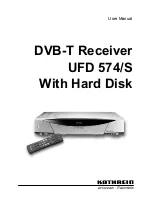
6 - 1
6. Remote control
6.1 Outline of remote control
The VHF Controller can operate a VHF transceiver (or transmitter/receiver) installed at
a distant place by remote control via a cable under the 3.4 kHz width voice specification
and a multiplex radio link. Control signals are outputted to the connectors J106 (for
further details, Refer to Section 4.4, "Cable connection") who are mounted on the rear
panel. For remote control by the serial control method, an optional MODEM
(CNM-162BA) should be built in the VHF transceiver. These remote control items are
shown in Table 6-1, "Control and response items".
Table 6-1 Control and response items
No.
Control/Response items
Control
Response
1.
Channel selection
1) Memory channel (memory channel mode)
2) Private channel
3) ITU (RR) channel (direct channel mode)
Yes
Yes
Yes
Yes
Yes
Yes
2.
PTT ON or OFF
Yes
Yes
3.
Power supply ON or OFF
Yes
Yes
4.
Squelch ON or OFF
Yes
Yes
5.
Remote/Local selection
---
Yes
6.
Receiving signal
---
Yes
7.
All alarm
---
Yes
8.
Alarm
1) Transmitter PLL unlock
2) Receiver PLL unlock
3) PA over heat
4) Transmitting power down
5) Remote control error
---
---
---
---
---
Yes
Yes
Yes
Yes
Yes
6.2 Serial control method
The serial control method requires a small number of connection cables with the
controller and can use a multiplex radio link for control from a distant place.
Since the method transmits a control or monitor signal using the RS-422 or AF FSK, the
equipment should build in an optional MODEM. There are two cases available; one is
that voice signals are superimposed and the other is that voice signals are not
superimposed.
The transmission rate and band are different between the two cases. Refer to the next
section 6.2.1, "Transmission specification".
















































